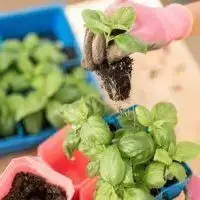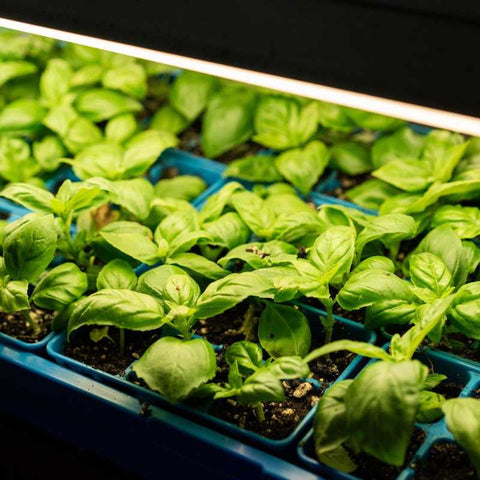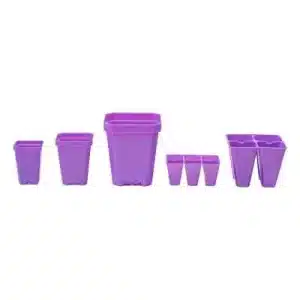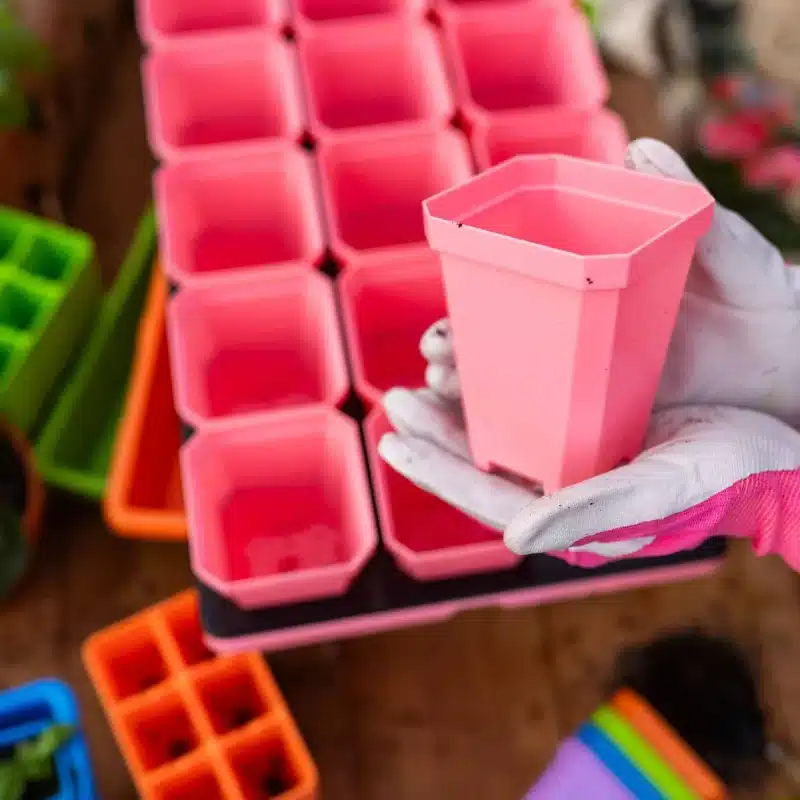Potting Up

What is Potting Up?
Potting up, or repotting, is the process of moving a plant from a smaller pot to a larger one. This is often necessary as plants grow and their root systems expand. Done correctly, potting up can promote healthy growth and development.
Why Should you Pot-Up?
Potting up is a common practice in gardening and houseplant care for several reasons:
- Root Growth: As plants grow, their root systems expand. Repotting to a larger container allows the roots to have more space to spread out and absorb nutrients and water.
- Nutrient Availability: Over time, the nutrients in the potting mix can become depleted. Repotting with fresh potting mix provides plants with a renewed supply of essential nutrients.
- Improved Drainage: If the roots of a plant are circling the bottom of the pot, it can lead to poor drainage. Repotting to a larger pot can help improve drainage and prevent root rot.
- Aesthetics: Repotting can also be done for aesthetic reasons. A new pot can give your plant a fresh look or match your decor better.
Can Potting-Up help prevent disease?
Yes, here's how:
- Improved Drainage: As mentioned earlier, repotting can improve drainage, which helps prevent root rot caused by excessive moisture.
- Fresh Potting Mix: Using fresh potting mix can reduce the risk of introducing pests or diseases that may have been present in the old soil.
- Removal of Damaged Roots: During repotting, you can inspect the roots for signs of disease or damage. Removing these unhealthy parts can help prevent the spread of disease to the rest of the plant.
However, it's important to note that while potting up can be a preventive measure, it's not a guarantee against disease. Regular inspection and proper care, including watering, fertilization, and pest control, are also essential for maintaining healthy plants.
When is the Right Time to Pot Up?
The best time to pot up depends on a few factors:
- Plant Growth: The plant should be showing signs of healthy growth, such as new leaves or shoots.
- Root System: The roots should be circling the bottom of the pot or growing out of the drainage holes.
- Season: Spring and early summer are generally ideal times for repotting, as plants are actively growing.
You should pot up a plant when its roots are starting to outgrow its current container.
Here are some signs that a plant needs repotting:
- Roots are growing out of the drainage holes: This is a clear indication that the roots have filled up the pot and need more space.
- Plant is top-heavy and falls over easily: If the plant is top-heavy, it's likely because the root system isn't strong enough to support the top growth.
- Water drains through the pot very quickly: This could be a sign that the roots have become so dense that they're not allowing the water to soak into the soil.
It's also important to consider the plant's growth rate and season. Some plants grow faster than others, and repotting may need to be done more frequently. Additionally, spring and early summer are generally ideal times for repotting, as plants are actively growing.
Varieties Suited for Potting Up
Most plants can benefit from potting up, but some varieties are particularly well-suited:
- Houseplants: Common houseplants like pothos, peace lilies, and spider plants can be repotted regularly.
- Annuals and Perennials: Many annuals and perennials, especially those grown for flowers or foliage, can benefit from repotting.
- Seedlings: Seedlings that have outgrown their starter pots should be repotted to larger containers.
Varieties that may not be suitable for repotting include:
- Succulents and Cacti: These plants often prefer to be pot-bound and may be stressed by repotting.
- Bonsai Trees: Bonsai trees are intentionally kept small and require specialized care, including careful repotting techniques.
Preventing Transplant Shock
Transplant shock occurs when a plant experiences stress due to the disturbance of its root system during repotting. To prevent transplant shock:
- Choose the Right Pot Size: The new pot should be only slightly larger than the old one. A pot that is too large can lead to overwatering.
- Prepare the Pot: Fill the new pot with fresh potting mix. Ensure the mix is moist but not soggy.
- Handle the Plant Carefully: Gently remove the plant from the old pot, taking care not to damage the roots.
- Replant: Place the plant in the center of the new pot and fill in the gaps with more potting mix. Firm the soil around the base of the plant.
- Water Thoroughly: Water the plant immediately after repotting to help settle the roots.
- Provide Shade: For a few days after repotting, place the plant in a shaded location to reduce stress.
By following these guidelines, you can successfully pot up your plants and promote their healthy growth.
Disclaimer: The information provided in this article is for educational and informational purposes only and is not intended as medical advice. It is not a substitute for professional medical advice, diagnosis, or treatment. Always seek the advice of a qualified healthcare provider with any questions you may have regarding a medical condition. The author and publisher of this article are not responsible for any adverse effects or consequences resulting from the use of any suggestions, preparations, or procedures described in this article.






